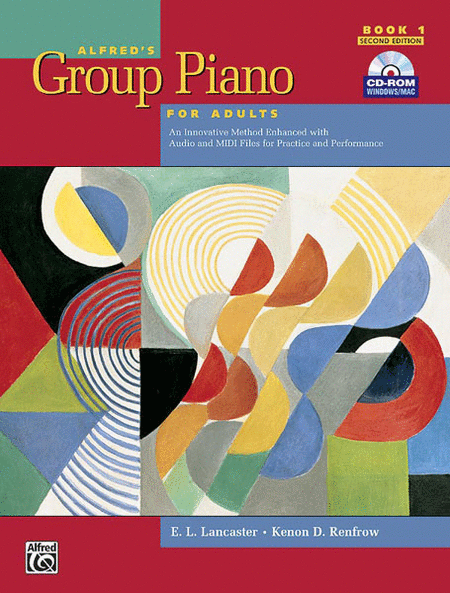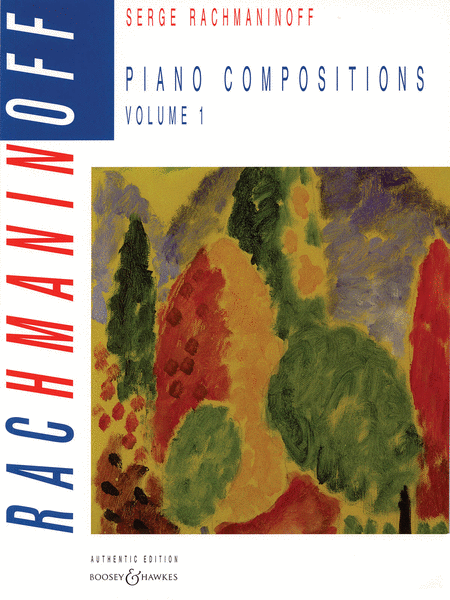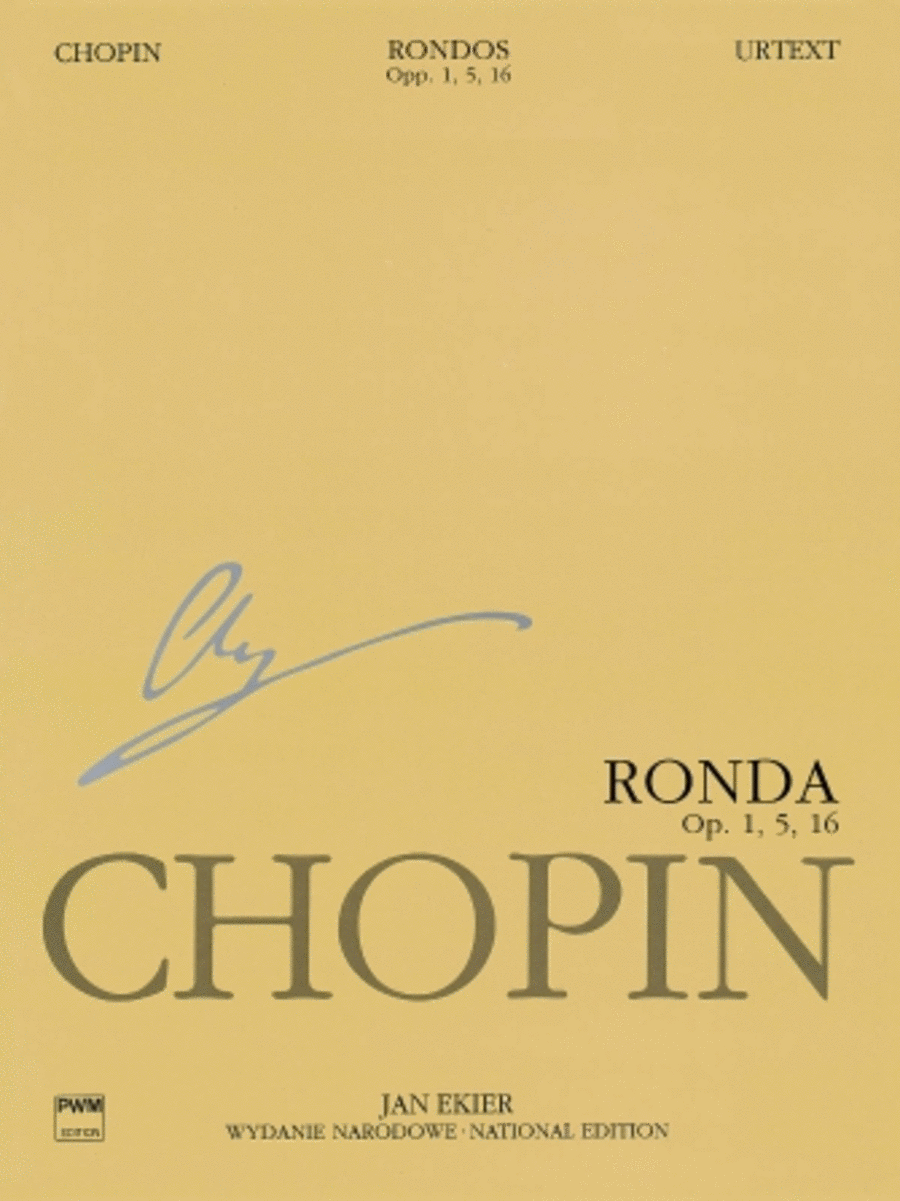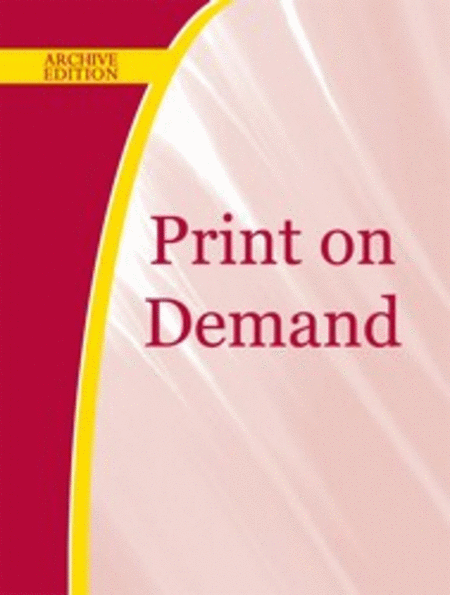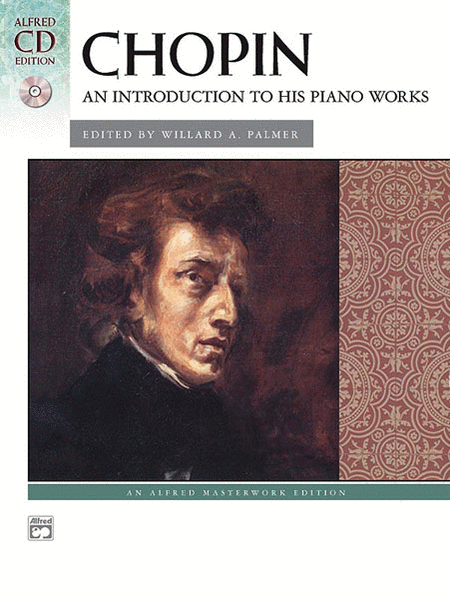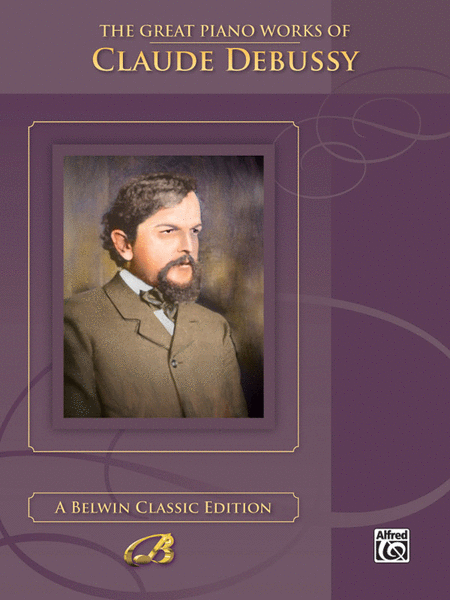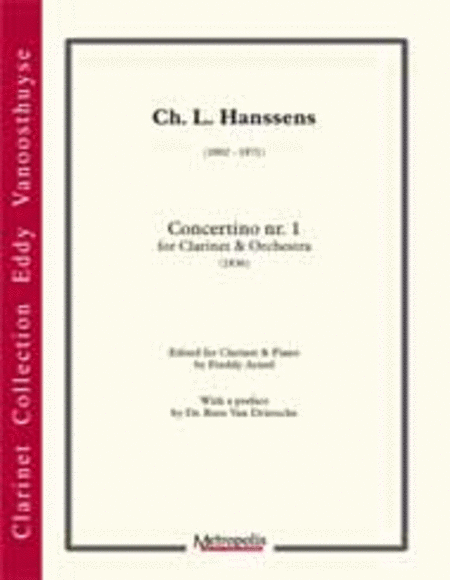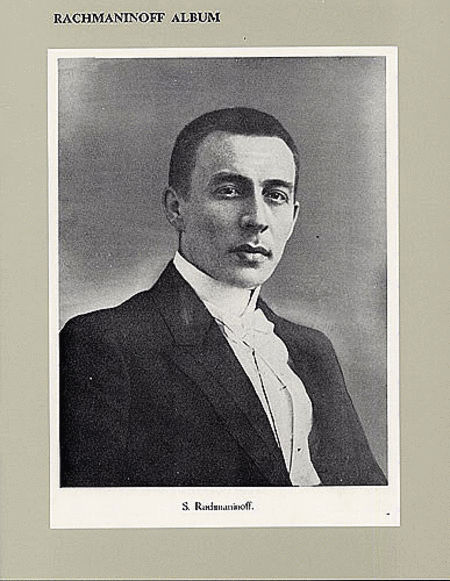|
| Transcriptions of Lieder
Piano seul
Carl Fischer
Chamber Music Piano SKU: CF.PL1056 Composed by Clara Wieck-Schumann, Fran...(+)
Chamber Music Piano
SKU: CF.PL1056
Composed by Clara
Wieck-Schumann, Franz
Schubert, and Robert
Schumann. Edited by
Nicholas Hopkins.
Collection. With Standard
notation. 128 pages. Carl
Fischer Music #PL1056.
Published by Carl Fischer
Music (CF.PL1056).
ISBN 9781491153390.
UPC: 680160910892.
Transcribed by Franz
Liszt. Introduction
It is true that Schubert
himself is somewhat to
blame for the very
unsatisfactory manner in
which his admirable piano
pieces are treated. He
was too immoderately
productive, wrote
incessantly, mixing
insignificant with
important things, grand
things with mediocre
work, paid no heed to
criticism, and always
soared on his wings. Like
a bird in the air, he
lived in music and sang
in angelic fashion.
--Franz Liszt, letter to
Dr. S. Lebert (1868) Of
those compositions that
greatly interest me,
there are only Chopin's
and yours. --Franz Liszt,
letter to Robert Schumann
(1838) She [Clara
Schumann] was astounded
at hearing me. Her
compositions are really
very remarkable,
especially for a woman.
There is a hundred times
more creativity and real
feeling in them than in
all the past and present
fantasias by Thalberg.
--Franz Liszt, letter to
Marie d'Agoult (1838)
Chretien Urhan
(1790-1845) was a
Belgian-born violinist,
organist and composer who
flourished in the musical
life of Paris in the
early nineteenth century.
According to various
accounts, he was deeply
religious, harshly
ascetic and wildly
eccentric, though revered
by many important and
influential members of
the Parisian musical
community. Regrettably,
history has forgotten
Urhan's many musical
achievements, the most
important of which was
arguably his pioneering
work in promoting the
music of Franz Schubert.
He devoted much of his
energies to championing
Schubert's music, which
at the time was unknown
outside of Vienna.
Undoubtedly, Urhan was
responsible for
stimulating this
enthusiasm in Franz
Liszt; Liszt regularly
heard Urhan's organ
playing in the
St.-Vincent-de-Paul
church in Paris, and the
two became personal
acquaintances. At
eighteen years of age,
Liszt was on the verge of
establishing himself as
the foremost pianist in
Europe, and this
awakening to Schubert's
music would prove to be a
profound experience.
Liszt's first travels
outside of his native
provincial Hungary were
to Vienna in 1821-1823,
where his father enrolled
him in studies with Carl
Czerny (piano) and
Antonio Salieri (music
theory). Both men had
important involvements
with Schubert; Czerny
(like Urhan) as performer
and advocate of
Schubert's music and
Salieri as his theory and
composition teacher from
1813-1817. Curiously,
Liszt and Schubert never
met personally, despite
their geographical
proximity in Vienna
during these years.
Inevitably, legends later
arose that the two had
been personal
acquaintances, although
Liszt would dismiss these
as fallacious: I never
knew Schubert personally,
he was once quoted as
saying. Liszt's initial
exposure to Schubert's
music was the Lieder,
what Urhan prized most of
all. He accompanied the
tenor Benedict
Randhartinger in numerous
performances of
Schubert's Lieder and
then, perhaps realizing
that he could benefit the
composer more on his own
terms, transcribed a
number of the Lieder for
piano solo. Many of these
transcriptions he would
perform himself on
concert tour during the
so-called Glanzzeit, or
time of splendor from
1839-1847. This publicity
did much to promote
reception of Schubert's
music throughout Europe.
Once Liszt retired from
the concert stage and
settled in Weimar as a
conductor in the 1840s,
he continued to perform
Schubert's orchestral
music, his Symphony No. 9
being a particular
favorite, and is credited
with giving the world
premiere performance of
Schubert's opera Alfonso
und Estrella in 1854. At
this time, he
contemplated writing a
biography of the
composer, which
regrettably remained
uncompleted. Liszt's
devotion to Schubert
would never waver.
Liszt's relationship with
Robert and Clara Schumann
was far different and far
more complicated; by
contrast, they were all
personal acquaintances.
What began as a
relationship of mutual
respect and admiration
soon deteriorated into
one of jealousy and
hostility, particularly
on the Schumann's part.
Liszt's initial contact
with Robert's music
happened long before they
had met personally, when
Liszt published an
analysis of Schumann's
piano music for the
Gazette musicale in 1837,
a gesture that earned
Robert's deep
appreciation. In the
following year Clara met
Liszt during a concert
tour in Vienna and
presented him with more
of Schumann's piano
music. Clara and her
father Friedrich Wieck,
who accompanied Clara on
her concert tours, were
quite taken by Liszt: We
have heard Liszt. He can
be compared to no other
player...he arouses
fright and astonishment.
His appearance at the
piano is indescribable.
He is an original...he is
absorbed by the piano.
Liszt, too, was impressed
with Clara--at first the
energy, intelligence and
accuracy of her piano
playing and later her
compositions--to the
extent that he dedicated
to her the 1838 version
of his Etudes d'execution
transcendante d'apres
Paganini. Liszt had a
closer personal
relationship with Clara
than with Robert until
the two men finally met
in 1840. Schumann was
astounded by Liszt's
piano playing. He wrote
to Clara that Liszt had
played like a god and had
inspired indescribable
furor of applause. His
review of Liszt even
included a heroic
personification with
Napoleon. In Leipzig,
Schumann was deeply
impressed with Liszt's
interpretations of his
Noveletten, Op. 21 and
Fantasy in C Major, Op.
17 (dedicated to Liszt),
enthusiastically
observing that, I feel as
if I had known you twenty
years. Yet a variety of
events followed that
diminished Liszt's glory
in the eyes of the
Schumanns. They became
critical of the cult-like
atmosphere that arose
around his recitals, or
Lisztomania as it came to
be called; conceivably,
this could be attributed
to professional jealousy.
Clara, in particular,
came to loathe Liszt,
noting in a letter to
Joseph Joachim, I despise
Liszt from the depths of
my soul. She recorded a
stunning diary entry a
day after Liszt's death,
in which she noted, He
was an eminent keyboard
virtuoso, but a dangerous
example for the
young...As a composer he
was terrible. By
contrast, Liszt did not
share in these negative
sentiments; no evidence
suggests that he had any
ill-regard for the
Schumanns. In Weimar, he
did much to promote
Schumann's music,
conducting performances
of his Scenes from Faust
and Manfred, during a
time in which few
orchestras expressed
interest, and premiered
his opera Genoveva. He
later arranged a benefit
concert for Clara
following Robert's death,
featuring Clara as
soloist in Robert's Piano
Concerto, an event that
must have been
exhilarating to witness.
Regardless, her opinion
of him would never
change, despite his
repeated gestures of
courtesy and respect.
Liszt's relationship with
Schubert was a spiritual
one, with music being the
one and only link between
the two men. That with
the Schumanns was
personal, with music
influenced by a hero
worship that would
aggravate the
relationship over time.
Nonetheless, Liszt would
remain devoted to and
enthusiastic for the
music and achievements of
these composers. He would
be a vital force in
disseminating their music
to a wider audience, as
he would be with many
other composers
throughout his career.
His primary means for
accomplishing this was
the piano transcription.
Liszt and the
Transcription
Transcription versus
Paraphrase Transcription
and paraphrase were
popular terms in
nineteenth-century music,
although certainly not
unique to this period.
Musicians understood that
there were clear
distinctions between
these two terms, but as
is often the case these
distinctions could be
blurred. Transcription,
literally writing over,
entails reworking or
adapting a piece of music
for a performance medium
different from that of
its original; arrangement
is a possible synonym.
Adapting is a key part of
this process, for the
success of a
transcription relies on
the transcriber's ability
to adapt the piece to the
different medium. As a
result, the pre-existing
material is generally
kept intact, recognizable
and intelligible; it is
strict, literal,
objective. Contextual
meaning is maintained in
the process, as are
elements of style and
form. Paraphrase, by
contrast, implies
restating something in a
different manner, as in a
rewording of a document
for reasons of clarity.
In nineteenth-century
music, paraphrasing
indicated elaborating a
piece for purposes of
expressive virtuosity,
often as a vehicle for
showmanship. Variation is
an important element, for
the source material may
be varied as much as the
paraphraser's imagination
will allow; its purpose
is metamorphosis.
Transcription is adapting
and arranging;
paraphrasing is
transforming and
reworking. Transcription
preserves the style of
the original; paraphrase
absorbs the original into
a different style.
Transcription highlights
the original composer;
paraphrase highlights the
paraphraser.
Approximately half of
Liszt's compositional
output falls under the
category of transcription
and paraphrase; it is
noteworthy that he never
used the term
arrangement. Much of his
early compositional
activities were
transcriptions and
paraphrases of works of
other composers, such as
the symphonies of
Beethoven and Berlioz,
vocal music by Schubert,
and operas by Donizetti
and Bellini. It is
conceivable that he
focused so intently on
work of this nature early
in his career as a means
to perfect his
compositional technique,
although transcription
and paraphrase continued
well after the technique
had been mastered; this
might explain why he
drastically revised and
rewrote many of his
original compositions
from the 1830s (such as
the Transcendental Etudes
and Paganini Etudes) in
the 1850s. Charles Rosen,
a sympathetic interpreter
of Liszt's piano works,
observes, The new
revisions of the
Transcendental Etudes are
not revisions but concert
paraphrases of the old,
and their art lies in the
technique of
transformation. The
Paganini etudes are piano
transcriptions of violin
etudes, and the
Transcendental Etudes are
piano transcriptions of
piano etudes. The
principles are the same.
He concludes by noting,
Paraphrase has shaded off
into
composition...Composition
and paraphrase were not
identical for him, but
they were so closely
interwoven that
separation is impossible.
The significance of
transcription and
paraphrase for Liszt the
composer cannot be
overstated, and the
mutual influence of each
needs to be better
understood. Undoubtedly,
Liszt the composer as we
know him today would be
far different had he not
devoted so much of his
career to transcribing
and paraphrasing the
music of others. He was
perhaps one of the first
composers to contend that
transcription and
paraphrase could be
genuine art forms on
equal par with original
pieces; he even claimed
to be the first to use
these two terms to
describe these classes of
arrangements. Despite the
success that Liszt
achieved with this type
of work, others viewed it
with circumspection and
criticism. Robert
Schumann, although deeply
impressed with Liszt's
keyboard virtuosity, was
harsh in his criticisms
of the transcriptions.
Schumann interpreted them
as indicators that
Liszt's virtuosity had
hindered his
compositional development
and suggested that Liszt
transcribed the music of
others to compensate for
his own compositional
deficiencies.
Nonetheless, Liszt's
piano transcriptions,
what he sometimes called
partitions de piano (or
piano scores), were
instrumental in promoting
composers whose music was
unknown at the time or
inaccessible in areas
outside of major European
capitals, areas that
Liszt willingly toured
during his Glanzzeit. To
this end, the
transcriptions had to be
literal arrangements for
the piano; a Beethoven
symphony could not be
introduced to an
unknowing audience if its
music had been subjected
to imaginative
elaborations and
variations. The same
would be true of the 1833
transcription of
Berlioz's Symphonie
fantastique (composed
only three years
earlier), the
astonishingly novel
content of which would
necessitate a literal and
intelligible rendering.
Opera, usually more
popular and accessible
for the general public,
was a different matter,
and in this realm Liszt
could paraphrase the
original and manipulate
it as his imagination
would allow without
jeopardizing its
reception; hence, the
paraphrases on the operas
of Bellini, Donizetti,
Mozart, Meyerbeer and
Verdi. Reminiscence was
another term coined by
Liszt for the opera
paraphrases, as if the
composer were reminiscing
at the keyboard following
a memorable evening at
the opera. Illustration
(reserved on two
occasions for Meyerbeer)
and fantasy were
additional terms. The
operas of Wagner were
exceptions. His music was
less suited to paraphrase
due to its general lack
of familiarity at the
time. Transcription of
Wagner's music was thus
obligatory, as it was of
Beethoven's and Berlioz's
music; perhaps the
composer himself insisted
on this approach. Liszt's
Lieder Transcriptions
Liszt's initial
encounters with
Schubert's music, as
mentioned previously,
were with the Lieder. His
first transcription of a
Schubert Lied was Die
Rose in 1833, followed by
Lob der Tranen in 1837.
Thirty-nine additional
transcriptions appeared
at a rapid pace over the
following three years,
and in 1846, the Schubert
Lieder transcriptions
would conclude, by which
point he had completed
fifty-eight, the most of
any composer. Critical
response to these
transcriptions was highly
favorable--aside from the
view held by
Schumann--particularly
when Liszt himself played
these pieces in concert.
Some were published
immediately by Anton
Diabelli, famous for the
theme that inspired
Beethoven's variations.
Others were published by
the Viennese publisher
Tobias Haslinger (one of
Beethoven's and
Schubert's publishers in
the 1820s), who sold his
reserves so quickly that
he would repeatedly plead
for more. However,
Liszt's enthusiasm for
work of this nature soon
became exhausted, as he
noted in a letter of 1839
to the publisher
Breitkopf und Hartel:
That good Haslinger
overwhelms me with
Schubert. I have just
sent him twenty-four new
songs (Schwanengesang and
Winterreise), and for the
moment I am rather tired
of this work. Haslinger
was justified in his
demands, for the Schubert
transcriptions were
received with great
enthusiasm. One Gottfried
Wilhelm Fink, then editor
of the Allgemeine
musikalische Zeitung,
observed of these
transcriptions: Nothing
in recent memory has
caused such sensation and
enjoyment in both
pianists and audiences as
these arrangements...The
demand for them has in no
way been satisfied; and
it will not be until
these arrangements are
seen on pianos
everywhere. They have
indeed made quite a
splash. Eduard Hanslick,
never a sympathetic
critic of Liszt's music,
acknowledged thirty years
after the fact that,
Liszt's transcriptions of
Schubert Lieder were
epoch-making. There was
hardly a concert in which
Liszt did not have to
play one or two of
them--even when they were
not listed on the
program. These
transcriptions quickly
became some of his most
sough-after pieces,
despite their extreme
technical demands.
Leading pianists of the
day, such as Clara Wieck
and Sigismond Thalberg,
incorporated them into
their concert programs
immediately upon
publication. Moreover,
the transcriptions would
serve as inspirations for
other composers, such as
Stephen Heller, Cesar
Franck and later Leopold
Godowsky, all of whom
produced their own
transcriptions of
Schubert's Lieder. Liszt
would transcribe the
Lieder of other composers
as well, including those
by Mendelssohn, Chopin,
Anton Rubinstein and even
himself. Robert Schumann,
of course, would not be
ignored. The first
transcription of a
Schumann Lied was the
celebrated Widmung from
Myrten in 1848, the only
Schumann transcription
that Liszt completed
during the composer's
lifetime. (Regrettably,
there is no evidence of
Schumann's regard of this
transcription, or even if
he was aware of it.) From
the years 1848-1881,
Liszt transcribed twelve
of Robert Schumann's
Lieder (including one
orchestral Lied) and
three of Clara (one from
each of her three
published Lieder cycles);
he would transcribe no
other works of these two
composers. The Schumann
Lieder transcriptions,
contrary to those of
Schubert, are literal
arrangements, posing, in
general, far fewer
demands on the pianist's
technique. They are
comparatively less
imaginative in their
treatment of the original
material. Additionally,
they seem to have been
less valued in their day
than the Schubert
transcriptions, and it is
noteworthy that none of
the Schumann
transcriptions bear
dedications, as most of
the Schubert
transcriptions do. The
greatest challenge posed
by Lieder transcriptions,
regardless of the
composer or the nature of
the transcription, was to
combine the vocal and
piano parts of the
original such that the
character of each would
be preserved, a challenge
unique to this form of
transcription. Each part
had to be intact and
aurally recognizable, the
vocal line in particular.
Complications could be
manifold in a Lied that
featured dissimilar
parts, such as Schubert's
Auf dem Wasser zu singen,
whose piano accompaniment
depicts the rocking of
the boat on the
shimmering waves while
the vocal line reflects
on the passing of time.
Similar complications
would be encountered in
Gretchen am Spinnrade, in
which the ubiquitous
sixteenth-note pattern in
the piano's right hand
epitomizes the
ever-turning spinning
wheel over which the
soprano voice expresses
feelings of longing and
heartache. The resulting
transcriptions for solo
piano would place
exceptional demands on
the pianist. The
complications would be
far less imposing in
instances in which voice
and piano were less
differentiated, as in
many of Schumann's Lieder
that Liszt transcribed.
The piano parts in these
Lieder are true
accompaniments for the
voice, providing harmonic
foundation and rhythmic
support by doubling the
vocal line throughout.
The transcriptions, thus,
are strict and literal,
with far fewer demands on
both pianist and
transcriber. In all of
Liszt's Lieder
transcriptions,
regardless of the way in
which the two parts are
combined, the melody
(i.e. the vocal line) is
invariably the focal
point; the melody should
sing on the piano, as if
it were the voice. The
piano part, although
integral to contributing
to the character of the
music, is designed to
function as
accompaniment. A singing
melody was a crucial
objective in
nineteenth-century piano
performance, which in
part might explain the
zeal in transcribing and
paraphrasing vocal music
for the piano. Friedrich
Wieck, father and teacher
of Clara Schumann,
stressed this point
repeatedly in his 1853
treatise Clavier und
Gesang (Piano and Song):
When I speak in general
of singing, I refer to
that species of singing
which is a form of
beauty, and which is a
foundation for the most
refined and most perfect
interpretation of music;
and, above all things, I
consider the culture of
beautiful tones the basis
for the finest possible
touch on the piano. In
many respects, the piano
and singing should
explain and supplement
each other. They should
mutually assist in
expressing the sublime
and the noble, in forms
of unclouded beauty. Much
of Liszt's piano music
should be interpreted
with this concept in
mind, the Lieder
transcriptions and opera
paraphrases, in
particular. To this end,
Liszt provided numerous
written instructions to
the performer to
emphasize the vocal line
in performance, with
Italian directives such
as un poco marcato il
canto, accentuato assai
il canto and ben
pronunziato il canto.
Repeated indications of
cantando,singend and
espressivo il canto
stress the significance
of the singing tone. As
an additional means of
achieving this and
providing the performer
with access to the
poetry, Liszt insisted,
at what must have been a
publishing novelty at the
time, on printing the
words of the Lied in the
music itself. Haslinger,
seemingly oblivious to
Liszt's intent, initially
printed the poems of the
early Schubert
transcriptions separately
inside the front covers.
Liszt argued that the
transcriptions must be
reprinted with the words
underlying the notes,
exactly as Schubert had
done, a request that was
honored by printing the
words above the
right-hand staff. Liszt
also incorporated a
visual scheme for
distinguishing voice and
accompaniment, influenced
perhaps by Chopin, by
notating the
accompaniment in cue
size. His transcription
of Robert Schumann's
Fruhlings Ankunft
features the vocal line
in normal size, the piano
accompaniment in reduced
size, an unmistakable
guide in a busy texture
as to which part should
be emphasized: Example 1.
Schumann-Liszt Fruhlings
Ankunft, mm. 1-2. The
same practice may be
found in the
transcription of
Schumann's An die Turen
will ich schleichen. In
this piece, the performer
must read three staves,
in which the baritone
line in the central staff
is to be shared between
the two hands based on
the stem direction of the
notes: Example 2.
Schumann-Liszt An die
Turen will ich
schleichen, mm. 1-5. This
notational practice is
extremely beneficial in
this instance, given the
challenge of reading
three staves and the
manner in which the vocal
line is performed by the
two hands. Curiously,
Liszt did not use this
practice in other
transcriptions.
Approaches in Lieder
Transcription Liszt
adopted a variety of
approaches in his Lieder
transcriptions, based on
the nature of the source
material, the ways in
which the vocal and piano
parts could be combined
and the ways in which the
vocal part could sing.
One approach, common with
strophic Lieder, in which
the vocal line would be
identical in each verse,
was to vary the register
of the vocal part. The
transcription of Lob der
Tranen, for example,
incorporates three of the
four verses of the
original Lied, with the
register of the vocal
line ascending one octave
with each verse (from low
to high), as if three
different voices were
participating. By the
conclusion, the music
encompasses the entire
range of Liszt's keyboard
to produce a stunning
climactic effect, and the
variety of register of
the vocal line provides a
welcome textural variety
in the absence of the
words. The three verses
of the transcription of
Auf dem Wasser zu singen
follow the same approach,
in which the vocal line
ascends from the tenor,
to the alto and to the
soprano registers with
each verse.
Fruhlingsglaube adopts
the opposite approach, in
which the vocal line
descends from soprano in
verse 1 to tenor in verse
2, with the second part
of verse 2 again resuming
the soprano register;
this is also the case in
Das Wandern from
Mullerlieder. Gretchen am
Spinnrade posed a unique
problem. Since the poem's
narrator is female, and
the poem represents an
expression of her longing
for her lover Faust,
variation of the vocal
line's register, strictly
speaking, would have been
impractical. For this
reason, the vocal line
remains in its original
register throughout,
relentlessly colliding
with the sixteenth-note
pattern of the
accompaniment. One
exception may be found in
the fifth and final verse
in mm. 93-112, at which
point the vocal line is
notated in a higher
register and doubled in
octaves. This sudden
textural change, one that
is readily audible, was a
strategic means to
underscore Gretchen's
mounting anxiety (My
bosom urges itself toward
him. Ah, might I grasp
and hold him! And kiss
him as I would wish, at
his kisses I should
die!). The transcription,
thus, becomes a vehicle
for maximizing the
emotional content of the
poem, an exceptional
undertaking with the
general intent of a
transcription. Registral
variation of the vocal
part also plays a crucial
role in the transcription
of Erlkonig. Goethe's
poem depicts the death of
a child who is
apprehended by a
supernatural Erlking, and
Schubert, recognizing the
dramatic nature of the
poem, carefully depicted
the characters (father,
son and Erlking) through
unique vocal writing and
accompaniment patterns:
the Lied is a dramatic
entity. Liszt, in turn,
followed Schubert's
characterization in this
literal transcription,
yet took it an additional
step by placing the
register of the father's
vocal line in the
baritone range, that of
the son in the soprano
range and that of the
Erlking in the highest
register, options that
would not have been
available in the version
for voice and piano.
Additionally, Liszt
labeled each appearance
of each character in the
score, a means for
guiding the performer in
interpreting the dramatic
qualities of the Lied. As
a result, the drama and
energy of the poem are
enhanced in this
transcription; as with
Gretchen am Spinnrade,
the transcriber has
maximized the content of
the original. Elaboration
may be found in certain
Lieder transcriptions
that expand the
performance to a level of
virtuosity not found in
the original; in such
cases, the transcription
approximates the
paraphrase. Schubert's Du
bist die Ruh, a paradigm
of musical simplicity,
features an uncomplicated
piano accompaniment that
is virtually identical in
each verse. In Liszt's
transcription, the
material is subjected to
a highly virtuosic
treatment that far
exceeds the original,
including a demanding
passage for the left hand
alone in the opening
measures and unique
textural writing in each
verse. The piece is a
transcription in
virtuosity; its art, as
Rosen noted, lies in the
technique of
transformation.
Elaboration may entail an
expansion of the musical
form, as in the extensive
introduction to Die
Forelle and a virtuosic
middle section (mm.
63-85), both of which are
not in the original. Also
unique to this
transcription are two
cadenzas that Liszt
composed in response to
the poetic content. The
first, in m. 93 on the
words und eh ich es
gedacht (and before I
could guess it), features
a twisted chromatic
passage that prolongs and
thereby heightens the
listener's suspense as to
the fate of the trout
(which is ultimately
caught). The second, in
m. 108 on the words
Betrogne an (and my blood
boiled as I saw the
betrayed one), features a
rush of
diminished-seventh
arpeggios in both hands,
epitomizing the poet's
rage at the fisherman for
catching the trout. Less
frequent are instances in
which the length of the
original Lied was
shortened in the
transcription, a tendency
that may be found with
certain strophic Lieder
(e.g., Der Leiermann,
Wasserflut and Das
Wandern). Another
transcription that
demonstrates Liszt's
readiness to modify the
original in the interests
of the poetic content is
Standchen, the seventh
transcription from
Schubert's
Schwanengesang. Adapted
from Act II of
Shakespeare's Cymbeline,
the poem represents the
repeated beckoning of a
man to his lover. Liszt
transformed the Lied into
a miniature drama by
transcribing the vocal
line of the first verse
in the soprano register,
that of the second verse
in the baritone register,
in effect, creating a
dialogue between the two
lovers. In mm. 71-102,
the dialogue becomes a
canon, with one voice
trailing the other like
an echo (as labeled in
the score) at the
distance of a beat. As in
other instances, the
transcription resembles
the paraphrase, and it is
perhaps for this reason
that Liszt provided an
ossia version that is
more in the nature of a
literal transcription.
The ossia version, six
measures shorter than
Schubert's original, is
less demanding
technically than the
original transcription,
thus representing an
ossia of transcription
and an ossia of piano
technique. The Schumann
Lieder transcriptions, in
general, display a less
imaginative treatment of
the source material.
Elaborations are less
frequently encountered,
and virtuosity is more
restricted, as if the
passage of time had
somewhat tamed the
composer's approach to
transcriptions;
alternatively, Liszt was
eager to distance himself
from the fierce
virtuosity of his early
years. In most instances,
these transcriptions are
literal arrangements of
the source material, with
the vocal line in its
original form combined
with the accompaniment,
which often doubles the
vocal line in the
original Lied. Widmung,
the first of the Schumann
transcriptions, is one
exception in the way it
recalls the virtuosity of
the Schubert
transcriptions of the
1830s. Particularly
striking is the closing
section (mm. 58-73), in
which material of the
opening verse (right
hand) is combined with
the triplet quarter notes
(left hand) from the
second section of the
Lied (mm. 32-43), as if
the transcriber were
attempting to reconcile
the different material of
these two sections.
Fruhlingsnacht resembles
a paraphrase by
presenting each of the
two verses in differing
registers (alto for verse
1, mm. 3-19, and soprano
for verse 2, mm. 20-31)
and by concluding with a
virtuosic section that
considerably extends the
length of the original
Lied. The original
tonalities of the Lieder
were generally retained
in the transcriptions,
showing that the tonality
was an important part of
the transcription
process. The infrequent
instances of
transposition were done
for specific reasons. In
1861, Liszt transcribed
two of Schumann's Lieder,
one from Op. 36 (An den
Sonnenschein), another
from Op. 27 (Dem roten
Roslein), and merged
these two pieces in the
collection 2 Lieder; they
share only the common
tonality of A major. His
choice for combining
these two Lieder remains
unknown, but he clearly
recognized that some
tonal variety would be
needed, for which reason
Dem roten Roslein was
transposed to C>= major.
The collection features
An den Sonnenschein in A
major (with a transition
to the new tonality),
followed by Dem roten
Roslein in C>= major
(without a change of key
signature), and
concluding with a reprise
of An den Sonnenschein in
A major. A three-part
form was thus established
with tonal variety
provided by keys in third
relations (A-C>=-A); in
effect, two of Schumann's
Lieder were transcribed
into an archetypal song
without words. In other
instances, Liszt treated
tonality and tonal
organization as important
structural ingredients,
particularly in the
transcriptions of
Schubert's Lieder cycles,
i.e. Schwanengesang,
Winterreise a... $32.99 - Voir plus => AcheterDélais: 1 to 2 weeks | | | |
| Das Pianobuch,Vol. 1
Piano seul
Peters
By Various. Edited by Sibylle Cada, Thomas Peter-Horas. For piano. Piano Music f...(+)
By Various. Edited by
Sibylle Cada, Thomas
Peter-Horas. For piano.
Piano Music for
Discoverers - Contains 72
easy and intermediate
original p iano
compositions,from
Couperin to Chick Cor
ea.Das Pianobuch presents
piano music from f our
centuries in a novel
mixture of standard
literature and pieces in
mint" condition. " It
contains not only minor
masterpieces by l ess
well-known composers, but
little known g ems by
great masters." Some of
the titles w" ere written
specifically for our
collection. Published by
C.F. Peters.
(1)$29.95 - Voir plus => AcheterDélais: 1 to 2 weeks | | | |
| Alfred's Group Piano for Adults: Student Book 1 (2nd Edition)
Piano seul [Partition + CD]
Alfred Publishing
An Innovative Method Enhanced with Audio and MIDI Files for Practice and Perform...(+)
An Innovative Method
Enhanced with Audio and
MIDI Files for Practice
and Performance. By Kenon
D. Renfrow, E. L.
Lancaster. For Piano.
Piano - Alfred's Group
Piano for Adults.
Alfred's Group Piano for
Adults. Book and CD-ROM.
360 pages. Published by
Alfred Publishing.
$69.99 - Voir plus => AcheterDélais: 1 to 2 weeks | | | |
| Finlandia, Valse Triste and Other Works for Solo Piano
Piano seul
Dover Publications
Piano SKU: AP.6-411621 Composed by Jean Sibelius. Piano Collection. Dover...(+)
Piano SKU:
AP.6-411621 Composed
by Jean Sibelius. Piano
Collection. Dover
Edition. 20th Century;
Masterwork; Romantic.
Book. Dover Publications
#06-411621. Published by
Dover Publications
(AP.6-411621). ISBN
9780486411620.
English. This
unique compilation of the
best of Sibelius's piano
music features a
carefully chosen
selection of unjustly
neglected compositions
for piano, including
Sonata in F, Op. 12;
Three Sonatinas, Op. 67;
Kyllikki (Three Lyric
Pieces), Op. 41; Two
Rondinos, Op. 68; Five
Flower Pieces, Op. 88;
Romance in D-flat; and
many more. 160 pgs. $16.95 - Voir plus => AcheterDélais: 1 to 2 weeks | | | |
| Piano Concerto No.1
2 Pianos, 4 mains
Peters
By Frederic Chopin. Edited by (Urtext)John Rink. For 2 piano. Op.11. Published b...(+)
By Frederic Chopin.
Edited by (Urtext)John
Rink. For 2 piano. Op.11.
Published by C.F. Peters.
$26.95 - Voir plus => AcheterDélais: 1 to 2 weeks | | | |
| Sergei Rachmaninoff: Piano Compositions - Volume 1
Piano seul [Partition]
Boosey and Hawkes
Composed by Sergei Rachmaninoff (1873-1943). Collection for solo piano. Text lan...(+)
Composed by Sergei
Rachmaninoff (1873-1943).
Collection for solo
piano. Text language
English, French, and
German. 107 pages.
Published by Boosey &
Hawkes.
$42.00 - Voir plus => AcheterDélais: 24 hours - In Stock | | | |
| Piano Solos - Volume 1
Piano seul - Intermédiaire
De Haske Publications
Piano - intermediate SKU: BT.DHP-1145559-401 12 intermediate solos for...(+)
Piano - intermediate
SKU:
BT.DHP-1145559-401
12 intermediate solos
for the modern
pianist. Composed by
Michiel Merkies. Book
Only. Composed 2014. 32
pages. De Haske
Publications #DHP
1145559-401. Published by
De Haske Publications
(BT.DHP-1145559-401).
ISBN 9789043136082.
9x12 inches.
International. PIAN
O SOLOS features twelve
marvellous contemporary
compositions that were
written in the style of
the pop and film music
genres. The solos are
designed to develop
technique and focus on
musical expression,
whilst also being fun to
play. Suitable
forintermediate players
and ideal for piano
lessons.
Stylistically reminiscent
of Yann Tiersen and
Yurama, these 12 pieces
by Michiel Merkies
accompany his Piano
Life method. The
focus of these pieces is
on the pleasure of
playing. This modern
music will complement
your piano playing
todayand fuel your
ambitions for
tomorrow!
In PIANO
SOLOS vind je twaalf
schitterende hedendaagse
composities in een bijna
filmische, poëtische
popmuziekstijl. De
stukken zijn bedoeld om
je techniek en muzikale
voordracht te
ontwikkelen, maar ze zijn
vooral heel leuk om te
spelen.
Demoeilijkheidsgraad is
gemiddeld en het boek is
bijzonder geschikt voor
gebruik in de pianoles.
Kortom: dit is muziek
die past bij je pianospel
van vandaag en bij je
ambities voor
morgen!
PIANO
SOLOS: Das sind zwölf
großartige moderne
Kompositionen in einem
filmischen, poetisch
anmutenden Pop-Stil. Die
Stücke sind dazu
gedacht, die Technik zu
verfeinern und Schüler
im musikalischen Vortrag
zu schulen, aber sie
machen vor allem
auchSpaß zu spielen.
Das im mittleren
Schwierigkeitsgrad
gehaltene Buch eignet
sich besonders gut für
den Gebrauch im
Klavierunterricht.
Kur
zum: Dies ist Musik
für das Klavierspiel
der Gegenwart, die den
Ehrgeiz für die
Zukunft
weckt!
PIANO SOLOS
rassemble douze
merveilleuses
compositions originales
écrites dans un style
contemporain aux lignes
élégantes et
poétiques. Les
pièces ont été
conçues pour
développer votre
technique de jeu et
favoriser
l’expression
musicale de
votreinterprétation,
tout en étant
divertissantes et
agréables jouer. Le
degré de difficulté
des morceaux est
élémentaire moyen,
ce qui rend ce recueil
complémentaire toute
méthode
d’apprentissage.
En un mot : cest
l’ouvrage qui
correspond votre jeu
pianistique
d´aujourd´hui, et
comblera vos ambitions
musicales de demain
!
PIANO SOLOS
raccoglie 12 splendide
composizioni
contemporanee scritte in
uno stile che si avvicina
alla musica fa film,
poetico e con accenti
pop. I brani sono stati
scritti per sviluppare la
tecnica e
l’espressione
musicale, ma sono in
primo luogodivertenti da
eseguire. Il livello di
difficolt è intermedio
e i pezzi si prestano in
modo ottimale ad essere
utilizzati come materiale
da studio.
In breve:
musica perfetta per le
esigenze attuali e le
ambizioni future! $18.95 - Voir plus => AcheterDélais: 2 to 3 weeks | | | |
| Piano Concerto No.1
Piano et Orchestre [Conducteur]
Baton Music
By Sergei Prokofiev (1891-1953). Arranged by Douglas McLain. For piano and conce...(+)
By Sergei Prokofiev
(1891-1953). Arranged by
Douglas McLain. For piano
and concert band. Baton
Music Instrumental
Series. Opus 10. Grade 5.
Full score and parts.
Duration 16:00. Published
by Baton Music
(1)$261.95 - Voir plus => AcheterDélais: 4 to 6 weeks | | | |
| Mendelssohn: At the Piano
Piano seul
G. Henle
13 Well-Known Original Pieces in Progressive Order. Composed by Felix Bartho...(+)
13 Well-Known Original
Pieces in Progressive
Order.
Composed by Felix
Bartholdy
Mendelssohn (1809-1847).
Edited by Sylvia Hewig-
Tröscher. At
the Piano.
Softcover. 54 pages. G.
Henle #HN1813. Published
by
G. Henle
$19.95 - Voir plus => AcheterDélais: 24 hours - In Stock | | | |
| Tschaikowsky Pi Streifzug Durch Leben U Werk
Piano seul - Intermédiaire
Schott
Piano (KL) - intermediate SKU: HL.49032978 Mit leichten Originalstucke...(+)
Piano (KL) - intermediate
SKU: HL.49032978
Mit leichten
Originalstucken und
Bearbeitungen.
Composed by Franz
Schubert. Edited by
Hans-Guenter Heumann.
This edition: Saddle
stitching. Sheet music.
Edition Schott. 48 pages.
Schott Music #ED 9255.
Published by Schott Music
(HL.49032978). ISBN
9783795755645.
German. The series
'Get to Know Composers'
presents works of famous
masters in easy
arrangements as well as
original compositions for
piano. A brief
biographical sketch with
contemporary colour
illustrations as well as
a list of the most
important works provide
easy access to the
respective composer.
Thus, amateur pianists
and young piano pupils
can embark on a vivid
excursion into the life
and work of important
composers.Tchaikovsky was
the first Russian
composer who gained
worldwide fame. His
symphonies, concertos and
ballets are part of the
standard repertoire of
the musical scene. In
addition to original
piano works, this volume
contains excerpts from
Tchaikovsky's best-known
compositions: the Violin
Concerto and his Piano
Concerto No. 1,
Symphonies Nos. 5 and 6,
the ballets 'SwanLake',
'The Sleeping Beauty' and
'Nutcracker', as well as
'Capriccio Italien' and
other works. $22.99 - Voir plus => Acheter | | | |
| Le Festin d'Esope, Op. 39, No. 12
Piano seul
G. Henle
For Piano. Edited by Norbert Gertsch. Henle Music Folios. Softcover. G. Henl...(+)
For Piano. Edited by
Norbert
Gertsch. Henle Music
Folios.
Softcover. G. Henle
#HN1394.
Published by G. Henle
$17.95 - Voir plus => AcheterDélais: 24 hours - In Stock | | | |
| Herbert Howells: Piano Concerto No.1 In C Minor (Full Score) [Conducteur]
Novello & Co Ltd.
Orchestra and Piano SKU: HL.14015537 Composed by Herbert Howells. Music S...(+)
Orchestra and Piano
SKU: HL.14015537
Composed by Herbert
Howells. Music Sales
America. 20th Century.
Score. 162 pages. Novello
& Co Ltd. #NOV890199.
Published by Novello & Co
Ltd. (HL.14015537).
ISBN 9780711989573.
UPC: 888680908409.
8.25x11.75x0.509
inches. Herbert
Howells wrote his First
Piano Concerto in 1913
while studying
composition at the Royal
College Of Music. This
was his first orchestral
work and was later
renumbered as Op.4.
Edited and completed by
John Rutter. Duration: 39
minutes. $59.95 - Voir plus => AcheterDélais: 2 to 3 weeks | | | |
| Rondos for Piano
Piano seul
PWM (Polskie Wydawnictwo Muzyczne)
(Chopin National Edition Vol. VIIIA). Composed by Frederic Chopin (1810-1849). E...(+)
(Chopin National Edition
Vol. VIIIA). Composed by
Frederic Chopin
(1810-1849). Edited by
Jan Ekier and Pawel
Kaminski. For Piano. PWM.
Polskie Wydawnictwo
Muzyczne #51600014.
Published by Polskie
Wydawnictwo Muzyczne
$20.95 - Voir plus => AcheterDélais: 24 hours - In Stock | | | |
| Yamaha Piano Library - Piano Pieces in Romantic Era Vol. 2
Piano seul
Yamaha
Piano SKU: YM.GTP01101464 Intermediate. Composed by Various. Class...(+)
Piano SKU:
YM.GTP01101464
Intermediate.
Composed by Various.
Classical. Piano
Classical. Book. Yamaha
Music Media #GTP01101464.
Published by Yamaha Music
Media (YM.GTP01101464).
ISBN 9784636880472.
8.75 x 12
inches. The Yamaha
Piano Library, which
began in the 1980s, is a
series designed to
provide students with new
teaching materials and
repertoire essential to
music education. Today,
pianists all over the
world are required to
play pieces from
different eras with
technique and sensitivity
that reflect the
characteristics of the
music of that period. To
meet these demands, this
series offers a wide
range of piano
compositions from
different periods,
regions, and styles. Many
of these pieces are not
included in other
collections and are
selected as required
pieces for competitions
each year.
This
fascinating collection
includes compositions
from Germany, one of the
leading countries of the
Romantic period, as well
as from all over Europe,
Russia, the United States
and other regions,
ranging from the less
frequently played to the
standard pieces in a
well-balanced manner.
Arranged in order of
difficulty so that they
can be played according
to the student's skill
level, the 31 pieces
composed for the piano by
Romantic composers are
selected for students
studying at Bayer's later
levels. $10.95 - Voir plus => AcheterDélais: 3 to 4 weeks | | | |
| Gifted Pianist: Scriva, Book 1
Piano seul
Roger Dean
(Skills For The Gifted Pianist). By Walter Noona. For piano. Piano Method. Level...(+)
(Skills For The Gifted
Pianist). By Walter
Noona. For piano. Piano
Method. Level 1. Piano
method. Published by
Roger Dean Publishing
$5.95 - Voir plus => AcheterDélais: 1 to 2 weeks | | | |
| Piano Sonatas Volume 1 Op. 2-22
Piano seul
G. Henle
Clothbound Score Piano Perahia Edition Clothbound. Composed by Ludwig van Beet...(+)
Clothbound Score Piano
Perahia Edition
Clothbound.
Composed by Ludwig van
Beethoven (1770-1827).
Edited
by Murray Perahia and
Norbert
Gertsch. Henle Music
Folios.
Classical. Hardcover. G.
Henle
#HN833. Published by G.
Henle
$88.95 - Voir plus => AcheterDélais: 24 hours - In Stock | | | |
| Chopin: An Introduction To His Piano Works - Book and Cd
Piano seul [Partition + CD] - Intermédiaire/avancé
Alfred Publishing
By Frederik Chopin. Keyboard. Published by Alfred Publishing. Known as a "pianis...(+)
By Frederik Chopin.
Keyboard. Published by
Alfred Publishing. Known
as a "pianist's
composer," Chopin's love,
passion and devotion to
piano music resulted in
more than 200
compositions. This
collection contains the
more accessible pieces
which still have vivid
melodies and lush
harmonies. The Alfred
Masterwork Library CD
Editions conveniently
combine each exceptional
volume with a
professionally recorded
CD that is sure to
inspire artistic
performances.
(1)$14.99 - Voir plus => AcheterDélais: 24 hours - In Stock | | | |
| Diary For Piano Supplement No. 1: 16 New Pieces
Piano seul - Intermédiaire
Schott
Piano - intermediate to advanced SKU: HL.49019722 Supplement 2019....(+)
Piano - intermediate to
advanced SKU:
HL.49019722
Supplement 2019.
Composed by Georg Kroell.
This edition:
Slipcase/Cassette. Sheet
music. Piano. Softcover.
30 pages. Duration 29'
10''. Schott Music
#ED8883-01. Published by
Schott Music
(HL.49019722). ISBN
9790001146081.
8.5x11.75x0.118
inches. The first
edition of Kroll's
portfolio of works
'Tagebuch fur Klavier'
(ED 8883) was published
in 1999. It contains a
large variety of short
piano pieces the
fundamental notes of
which are obtained by
permutation from a
twelve-note series from
Schoenberg's Suite for
Piano Op. 25. An updated
edition was published in
2015.Another 16
compositions created
between 2014 and 2019 can
now be added to these
pieces with this
supplement (ED 8883-01).
In 1999, the 'Tagebuch
fur Klavier' was awarded
the Deutscher
Musikeditionspreis. $24.99 - Voir plus => Acheter | | | |
| The Great Piano Works of Claude Debussy
Piano seul
Belwin
Solo piano - Difficulty: medium-difficult to difficult SKU: AP.0034B Comp...(+)
Solo piano - Difficulty:
medium-difficult to
difficult SKU:
AP.0034B Composed by
Claude Debussy.
Masterworks; Piano
Collection. Belwin
Classic Edition: The
Great Piano Works Series.
Impressionistic.
Collection. With
introductory text (does
not include words to the
songs). 159 pages. Belwin
Music #00-0034B.
Published by Belwin Music
(AP.0034B). ISBN
9781576239483. UPC:
029156607673. 9x12
inches.
English. This
volume in our new series
features 29 compositions
by Claude Debussy,
including such famous
pieces as 'Clair de
Lune,' 'Reverie,' 'The
Girl with the Flaxen
Hair,' 'Golliwogg's Cake
Walk,' and others. It
includes pieces from the
French master's wealth of
piano compositions,
including the
'Arabesques,' PETITE
SUITE, CHILDREN'S CORNER
SUITE, both books of
'Preludes,' and
individual pieces. A wide
variety of music from the
French impressionistic
genius! 29 titles on 160
pages. $15.95 - Voir plus => AcheterDélais: 1 to 2 weeks | | | |
| Concertino No. 1 (Piano Reduction)
Clarinette et Piano
Metropolis Music Publishers
Composed by Karel Lodewijk Hanssens. Arranged by Freddy Arteel. Woodwinds - Clar...(+)
Composed by Karel
Lodewijk Hanssens.
Arranged by Freddy
Arteel. Woodwinds -
Clarinet. Clarinet
Collection - Eddy
Vanoosthuyse. Metropolis
Music Publishers
#CP6215EM. Published by
Metropolis Music
Publishers (IS.CP6215EM).
$26.00 - Voir plus => AcheterDélais: 1 to 2 weeks | | | |
| Alfred's Basic Piano Course - Repertoire Book Complete Levels 2 and 3
Piano seul [Partition]
Alfred Publishing
For the Later Beginner. By Willard A. Palmer, Morton Manus, and Amanda Vick Leth...(+)
For the Later Beginner.
By Willard A. Palmer,
Morton Manus, and Amanda
Vick Lethco. For Piano.
Piano Method. Alfred's
Basic Piano Library.
Book. 48 pages. Published
by Alfred Publishing.
(2)$7.99 - Voir plus => AcheterDélais: 1 to 2 weeks | | | |
| Piano Concerto No. 1 in B flat minor Op. 23
Piano et Orchestre [Conducteur]
Breitkopf & Härtel
Piano/harpsichord and orchestra (solo: pno - 2.2.2.2. - 4.2.3.0. - timp - str) <...(+)
Piano/harpsichord and
orchestra (solo: pno -
2.2.2.2. - 4.2.3.0. -
timp - str) SKU:
BR.PB-4960 Composed
by Pjotr Iljitsch
Tschaikowsky. Orchestra;
Softbound.
Partitur-Bibliothek
(Score Library). Solo
concerto; Romantic. Full
score. 120 pages.
Duration 32'. Breitkopf
and Haertel #PB 4960.
Published by Breitkopf
and Haertel (BR.PB-4960).
ISBN 9790004207451. 10
x 12.5 inches. The
roller coaster of
opinions - worthless,
absolutely unplayable
(claims Nikolaj
Rubinstein, basically
Tchaikovsky's desired
pianist for his Concerto
in B flat minor);
brilliant, magnificent
(Hans von Bulow, then
first performer and
dedicatee of the work) -
demonstrates the work's
initially ambivalent
reception. Tchaikovsky's
Piano Concerto No.1 is
one of the most powerful
and popular compositions
of the classical music
repertoire altogether;
and it is also quite
unconventional and runs
counter to the norms of
the time. Though it may
seem strange to us today,
let us recall that during
his lifetime, Tchaikovsky
was regarded disputable
abroad (and especially in
Germany), was considered
an ultra-modern Russian
composer, and was even
accused of being a
musical nihilist and
primitivist. But one
glance at the score of
the piano concerto
suffices to reveal its
truly amazing character
... $92.95 - Voir plus => AcheterDélais: 3 to 4 weeks | | | |
| Rachmaninov - Album
Piano seul
Bosworth
Piano SKU: HL.14026812 Composed by Sergei Rachmaninoff. Music Sales Ameri...(+)
Piano SKU:
HL.14026812 Composed
by Sergei Rachmaninoff.
Music Sales America.
Classical. Book
[Softcover]. 52 pages.
Bosworth & Co.
#BOE000301. Published by
Bosworth & Co.
(HL.14026812). UPC:
884088444204.
8.5x11.75x0.444
inches. Collection
of the most popular
compositions, newly
revised and fingered by
Vernon Warner. An
excellent introduction to
Rachmaninov's Piano
music. $17.00 - Voir plus => AcheterDélais: 2 to 3 weeks | | | |
| Piano Trio No. 1 in D Minor, Op. 49
Piano Trio: piano, violon, violoncelle
G. Henle
Set of Parts Cello; Chamber Music; Piano Accompaniment; Violin (Ensemble) SKU...(+)
Set of Parts Cello;
Chamber Music; Piano
Accompaniment; Violin
(Ensemble) SKU:
HL.51481531 Set of
Parts for Violin, Cello
and Piano. Composed
by Felix Bartholdy
Mendelssohn. Henle Music
Folios. Classical.
Softcover. 84 pages. G.
Henle #HN1531. Published
by G. Henle
(HL.51481531). UPC:
840126989311.
9.25x12.25x0.361
inches. Mendelssohn
is considered a
self-critical composer,
who repeatedly reworked a
number of his pieces
until he deemed them
worthy to be published.
The path to his first
Piano Trio was
particularly rocky: only
after several attempts
was he able to complete
it in the summer of 1839;
it appeared in 1840 after
further revisions. This
perfectionism paid off,
for Mendelssohn's D Minor
Trio was immediately
received with enthusiasm.
Robert Schumann wrote:
“It is the master
trio of the present day,
like those of Beethoven
in Bb and D and that of
Franz Schubert in Eb were
in their time; a very
beautiful composition
which after years will
still delight
grandchildren and
great-grandchildren.â€
Which was to prove
true: even today, it
numbers among the most
popular works in the trio
repertoire in general.
The trio, taken from the
volume Mendelssohn
• Piano Trios HN
957, is now available
from Henle for the first
time also as a practical
single edition.
About Henle
Urtext
What I can expect from
Henle Urtext
editions:
- error-free, reliable
musical texts based on
meticulous musicological
research - fingerings and
bowings by famous artists
and pedagogues
- preface in 3
languages with
information on the
genesis and history of
the work
- Critical Commentary
in 1 – 3 languages with
a description and
evaluation of the sources
and explaining all source
discrepancies and
editorial
decisions
- most
beautiful music
engraving
- page-turns, fold-out
pages, and cues where you
need them
- excellent print
quality and
binding
- largest Urtext
catalogue
world-wide
- longest Urtext
experience (founded 1948
exclusively for Urtext
editions)
$37.95 - Voir plus => AcheterDélais: 24 hours - In Stock | | | |
| Rondo in G Major, Op. 51, No. 2
Piano seul
G. Henle
For Piano. Composed by Ludwig van Beethoven (1770- 1827). Edited by Joanna Co...(+)
For Piano. Composed by
Ludwig van Beethoven
(1770-
1827). Edited by Joanna
Cobb
Biermann. Henle Music
Folios. Softcover. G.
Henle
#HN1457. Published by G.
Henle
$10.95 - Voir plus => AcheterDélais: 24 hours - In Stock | | |
|


